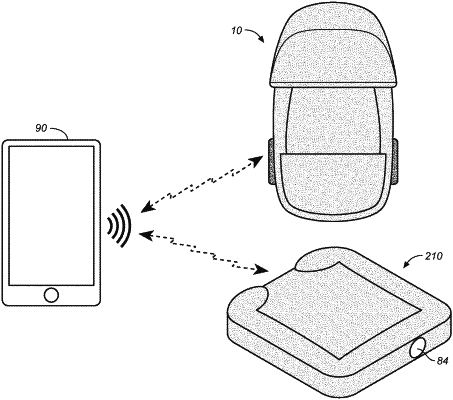| CPC G05D 23/1905 (2013.01) [G05B 19/042 (2013.01); G05D 23/1931 (2013.01); B62B 9/102 (2013.01); B62B 2204/02 (2013.01); B62B 2204/04 (2013.01); G05B 2219/25252 (2013.01); G05B 2219/2614 (2013.01); H04L 67/12 (2013.01); H04W 4/38 (2018.02)] | 13 Claims |

|
1. A method of controlling the temperature for a small, closed environment, the method comprising the steps of:
a) providing a system to control the temperature of a small, closed environment;
b) starting the portable apparatus to control the temperature of a small, closed environment (the “device”);
c) determining whether the user has turned on the device;
d) if the user has not turned on the device, evaluating whether input sensors 1 and 2 are greater than 1;
e) if input sensors 1 and 2 are not greater than 1, turning on the device;
f) if the user has not turned on the device or if input 1 and 2 sensors are greater than 1, evaluating the value of input sensor 3 (the temperature of the environment to be controlled; herein “current temperature”);
g) setting the temperature to the value of input sensor 3;
h) evaluating the value of input sensor 4 and setting the value of input sensor 4 as the external temperature;
i) determining if the user has set a separate value on input sensor 5;
j) if the user has not set a separate value on input 5, sending a user alert “pet/infant in product, auto-climate system on”;
k) determining if the temperature is greater than 21 degrees Celsius;
l) if the user has not set a separate value on input sensor 5, and if the temperature is greater than 21 degrees Celsius, turning on Circuit 1;
m) determining if the temperature is less than 21 degrees Celsius while Circuit 1 is turned on;
n) if the temperature is less than 21 degrees Celsius, turning Circuit 1 off;
o) if the user has not set a separate value on input sensor 5, and if the temperature is not greater than 21 degrees Celsius or if Circuit 1 is turned off, determining if the temperature is less than 18 degrees Celsius;
p) if the temperature is less than 18 degrees Celsius, turning on Circuit 2;
q) determining if the external temperature is less than 8 degrees Celsius;
r) if the external temperature is less than 8 degrees Celsius, turning on superheat;
s) sending user alert (“Superheat On”);
t) checking if the temperature less than 21 degrees Celsius;
u) if the temperature is not less than 21 degrees Celsius, turning off Circuit 2;
v) if the temperature is not less than 21 degrees Celsius, turning off superheat;
w) if the user has set a separate value on input 5, determining if the user input value is between 16 degrees Celsius and 27 degrees Celsius;
x) if the user has set a separate value on input sensor 5, determining if the user input value is less than the temperature;
y) if the user input value is less than the current, turning on Circuit 1;
z) determining if the user input value is equal to or greater than the temperature;
aa) if the user input value is greater than the temperature, turning off Circuit 1;
bb) determining if the user input value is greater than the temperature;
cc) if the user input value is not greater than the temperature, determining if the user has entered a new user value, and returning to step c;
dd) if the user input value is greater than the temperature, turning on Circuit 2;
ee) determining if the external temperature is less than 8 degrees Celsius;
ff) if the external temperature is less than 8 degrees Celsius, turning on superheat;
gg) if the external temperature is greater than 8 degrees Celsius determining if user has turned on superheat;
hh) determining if user value is equal to or less than the temperature;
ii) if user value is equal to or less than the temperature, turning off Circuit 2;
jj) if user value is equal to or less than the temperature, turning off superheat; and
kk) if while the device is turned on the wireless connectivity between a handheld digital device and the device is lost, sending user an alert (infant/Pet is Out of Range”).
|